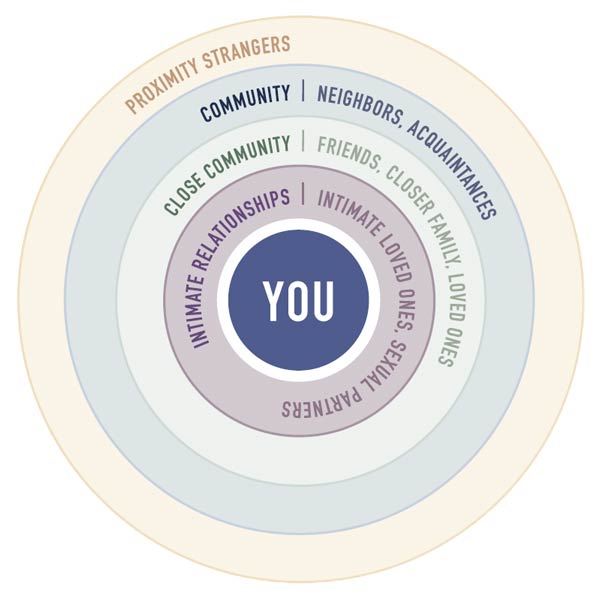A Look at Loneliness
Author: Alan Wolfelt
"The eternal quest of the individual human being is to shatter his loneliness." — Norman Cousins
The COVID-19 pandemic has increased our awareness of the problem of loneliness. We were lonely before the novel coronavirus arose, and we’re even lonelier since routine social distancing, isolation, and quarantining became unfortunate necessities. Of course, for those of us in grief, the natural loneliness of loss also compounds our feelings of separation and isolation.
Today loneliness is a crisis that cuts across cultures, continents, and classes. Britain has added a Minister for Loneliness to its federal government. In the United States, thirty-five percent of adults over the age of 45 report feeling lonely. In one recent Cigna survey, over half of Americans said they always or sometimes feel that no one knows them well. And young people are lonely, too. Some studies have found that Millennials and Generation Z are the loneliest of all.
Human beings are social creatures. While each of us is a capable, autonomous individual, we are not meant to exist for very long individually. Since time began, we’ve lived in social groups. We are built to interact with and rely on others. We are built for empathy, connection, and love—especially when we are grieving.
That’s why loneliness hurts. But not only does loneliness wound us emotionally, it causes measurable physical harm. Studies show that lonely people are more likely to get sick, suffer cognitive decline, and die sooner. Scientists have learned that loneliness even affects the body on the cellular level. Social isolation can trigger chronic inflammation, which elevates the risk of heart disease, stroke, cancer, and dementia.
 Photo by: Unsplash, Neal E. Johnson
Photo by: Unsplash, Neal E. Johnson
Loneliness is a personal mental wellness challenge, but it’s also a public health threat as ominous as any pandemic or global climate danger. If you’ve been feeling lonely or know someone who has, it’s time to take stock and address the problem.
Measuring Your Loneliness
All of us are part of a number of communities and relationships. And all of these together form our circles of connection. Depending on your life circumstances right now, you may be connected to your immediate family (partner and children, if you have them), your chosen family (close friends), your family of origin (mother, father, siblings), your casual friends and acquaintances, your extended family, your work community, your neighborhood, any groups or organizations you belong to, and the city or town in which you live.
In the Wolfelt Loneliness Inventory graphic, you will score your sense of loneliness in several circles: proximity, community, close community, intimate relationships, and you. Any section with a low score (mostly 1s and 2s) is an area in your circles of connection that would probably benefit from strengthening and maybe expanding.

Yet keep in mind that each person’s need for connection is different. Based on your personality, degree of extroversion or introversion, and life circumstances, you may feel well connected with lots of people in your life or just a few. In general, I would say that it’s necessary to have a tribe. That is, it’s important to have connections in all of the concentric circles, even if you only have one or two solid entries in each circle. In addition, when it comes to combating loneliness as well as being supported in grief, the most important circles are those toward the center. If your relationships with yourself, intimate others, and close community are strong and fulfilling, you are less likely to feel lonely.
Finally, don’t overlook the fact that “you” are in the center of the circles of connection. Excellent self-esteem and self-care ripple out from the center, naturally engaging and buoying all of the other circles. Conversely, poor self-esteem and self-care ripple out from the center but have the opposite effect. They damage and weaken the connections in all of the other circles. Think of healthy self-love as propelling good vibes through the circles of connection and poor self-love as emanating weak and sometimes even toxic vibes.
Take an Inventory of Your Loneliness
I visit routinely.
1
2
3
4
as other people I socialize with.
with people I care about.
and other special days with.
biggest dreams, worries and losses.
or touch in my life that I want.
in my life that I want.
and self-compassion.
Before we talk about loneliness scores, I want to emphasize that loneliness is not truly a measurable experience. The scale I’ve created is meant only to help you begin to understand your loneliness better. If you feel deeply lonely, you are deeply lonely, no matter what your score may say. The same goes for minimal or more occasional loneliness. With those caveats firmly in mind, on this scale, 19-38 points to severe loneliness, 39-57 moderate loneliness, and 58-78 mild loneliness. In general, any section with a low score (mostly 1s and 2s) is an area in your circles of connection that would probably benefit from strengthening and maybe expanding. In addition to understanding the degree of your loneliness, the sections in the scale will also help you discern which areas of your life would most benefit from more connection.
Finding Your Way Past Loneliness
Finding your way past loneliness involves befriending yourself and befriending others. But as you have probably realized, it’s not as simple as saying, “I just need to make friends” or “I just need to socialize more.”
For one, making friends and socializing is difficult for some people, and the more disconnected you are at this point, the more difficult it can be. For another, you may already have friends and social circles yet still feel lonely, especially during this time of isolation and social distancing.
Despite current restrictions, the best way to build bonds with others is through proximity, repetition, and quality time.
This may sound totally obvious, but when we’re physically near someone frequently, we’re more likely to develop a strong relationship with them. Being together in person is best, but when that’s not possible—such as when people live in different communities, for example—it’s still possible to maintain close ties through frequent video calls, emails, and texts.
But quality time is the other essential factor here. As you may have experienced yourself, you can be around someone every day yet not feel close to them. Perhaps you even live in the same household with others yet feel like you don’t have effective, cherished relationships with them.
Emotional bonds are built on quality time. What does that mean? Quality time is time spent with another person or people in which you are focusing on each other, communicating well, and empathizing. You can be in the same room with another person, each immersed in your own phone. This is not quality time. But if you sit together in front of the same laptop or a TV, watching a favorite show and chatting about it as it plays, that may count as quality time. Similarly, distractedly talking “at” each other while you’re busy with other things is not quality time, but stopping to look each other in the eyes and really give one another undivided attention—that’s the quality time that’s needed to build love and devotion as well as provide you with divine momentum toward healing your grief.
Stop for a second and think about the most cherished moments in your life—the ones that not only bring a smile to your face but also tug at your heart. It’s likely they were spent sharing quality time with those you loved the most. That’s one of the most important questions I hope you will keep in mind as you find your way through loneliness: How can I spend more quality time with people I care about and who help me feel supported in my grief?
To create a detailed plan for making better friends with yourself and building stronger connections with others, I invite you to read the full text of my new book If You’re Lonely: Finding Your Way, from which this article is excerpted. With intention and support, you can find your way through loneliness. You are a worthy person who needs and deserves connection. There is help, and there is hope. Fortunately, TAPS provides a number of resources that foster connection and community, so they are an excellent place to start.
I am hopeful about you finding your way through loneliness. In my career, I have worked with many lonely people who have worked to rebuild self-esteem and connection with others. Their lives have been transformed for the better by the concepts and small daily practices covered in If You’re Lonely. Yours can be transformed, too. I wish you a more connected 2021.
Alan D. Wolfelt, Ph.D., is a longtime TAPS supporter. Dr. Alan Wolfelt serves as Director of the Center for Loss and Life Transition and is a member of the TAPS Advisory Board. He has written many books that help people mourn, including Healing Your Grieving Heart After a Military Death (coauthored with TAPS President Bonnie Carroll). Visit www.centerforloss.com to learn more about grief and to order Dr. Wolfelt’s books.
